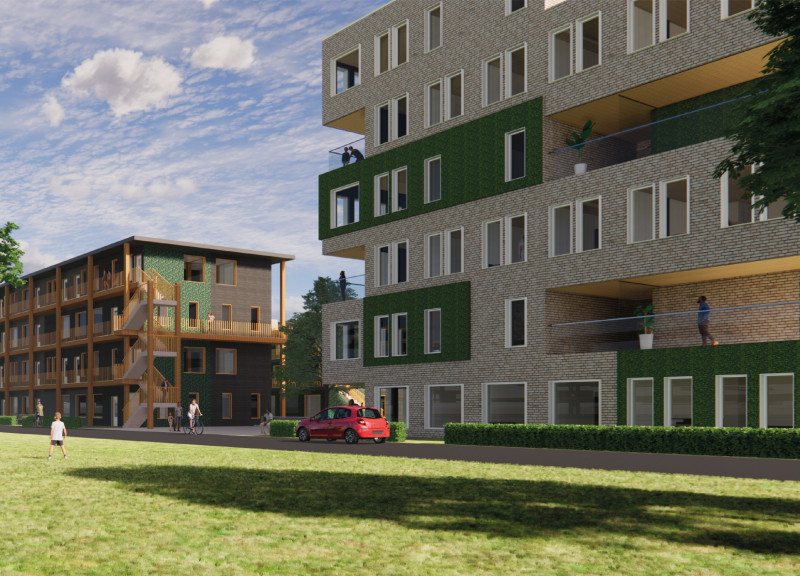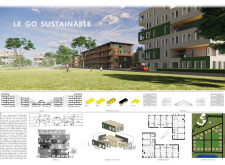5 key facts about this project
The concept behind this architectural design centers around creating an environment that fosters social interaction while providing a retreat from the hustle of city life. The building functions primarily as a multifunctional community center, accommodating a range of activities from social gatherings to educational workshops, catering to the diverse needs of the community. The open-plan layout encourages flexibility and adaptability, allowing the space to be used in various configurations depending on the specific event or activity.
The primary structure is composed of a combination of reinforced concrete and steel, providing a solid yet flexible framework capable of supporting large open spaces. These materials are carefully chosen not only for their structural properties but also for their ability to perform well in the local climate. The façade is adorned with large, triple-glazed windows that invite natural light while minimizing heat loss, a consideration that speaks to the modern architectural goal of energy efficiency. This choice of glazing symbolizes the transparency of the community project, inviting the public in while offering views of the surrounding environment.
In addition to the concrete and steel, the design incorporates sustainable timber cladding, which warms the aesthetics of the exterior and promotes a connection with nature. This choice of material resonates with the biomimicry principles, mimicking natural textures and colors found in the vicinity. The timber cladding not only contributes to the overall aesthetic appeal but also plays a vital role in the building's thermal performance, ensuring a comfortable indoor climate throughout the seasons.
Another unique aspect of this architectural project is its emphasis on green spaces. The design features an extensive landscape plan that includes native plants, green roofs, and dedicated areas for community gardening. This integration of nature aims to enhance the community's well-being, offering spaces for relaxation and social interaction, while also promoting biodiversity within the urban landscape. The landscaping reflects a commitment to sustainability and acknowledges the intrinsic value of green spaces in urban settings.
Architectural ideas surrounding user experience are evident in how the building's circulation is planned. Flow within the structure is intuitive, with clearly defined paths that guide users seamlessly from one area to another. The careful placement of communal areas encourages incidental interactions, fostering a sense of community and togetherness. The use of color and texture throughout the interiors has been meticulously curated to evoke a sense of comfort and subtle sophistication, appealing to users of all ages and backgrounds.
The design also incorporates features aimed at enhancing accessibility, ensuring that the space is welcoming to everyone, including individuals with disabilities. Ramps, wide doorways, and tactile guides are woven into the design fabric, emphasizing an inclusive approach and exemplifying the importance of accessibility in contemporary architecture.
As the project progresses, it becomes increasingly evident that its unique design approaches not only meet the functional requirements of a community center but also aspire to enhance the quality of life for its users. The blend of innovative material use, thoughtful landscaping, and user-centered design establishes a harmonious relationship between architecture and its environment.
For those interested in a deeper understanding of these design elements, exploring the architectural plans and sections would provide further insights into the meticulous thought process behind this project. The architectural designs embody a commitment to community engagement and sustainability, making it an essential addition to the urban landscape. Readers are encouraged to delve into the project presentation to discover more about the thoughtful architectural ideas that shape this impressive community center, reflecting both the aspirations of its users and the demands of its environment.























